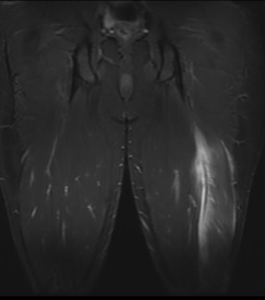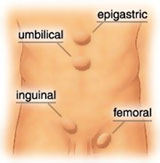Radial tunnel syndrome is rare, it is challenging to
differentially diagnose and can be a monster to manage. If you
have a recalcitrant case of tennis elbow then this post will
interest you! This article discusses the best available
evidence for assessment and management of radial tunnel
syndrome.
Have you ever heard of snapping scapula syndrome? If you
answered no, I would not be too surprised. Whilst this
condition is more common than you may think, it seems to be
underappreciated within the physiotherapy. Thus, this article
will discuss snapping scapula syndrome including what it is,
why it occurs and what you need to do to fix it!
Ankle sprains are very common in the practice of sports
physiotherapy. However, unfortunately many patients go on to
have long term problems. This has lead to the development of
many proposed treatments and rehabilitation programs. This
article will discuss new research into the use of manual
therapy techniques combined with exercises for the
rehabilitation of inversion ankle sprains.
Many sports physiotherapists rehabilitate hamstring injuries
on a daily basis. Unfortunately, they can be very tricky to
fully and definitively rehabilitate fully and reported
re-injury rates are as high as 50%. This statistic inevitably
leads to the people screaming it is due to inadequate
rehabilitation techniques, which may be correct. Accordingly,
this article will discuss new research which compares the
clinical and morphological effects of 2 effective
rehabilitation programs for hamstring injuries.
Now, we have discussed Arnold Schwarzenegger on this site
before, in a post about the psychology of sports injury and
physiotherapy. However, it seems that man was quite the
insightful gentleman. In his text The Encyclopedia of Modern
Bodybuilding Arnold discusses the mind to muscle connection
and the importance of not just lifting a weight up and down,
but having your “mind in the muscle”. This article
will discuss new research into conscious correction of
scapular position.
Those in the world of sports physiotherapy would be aware of
the frequency with which we encounter episodes of patellar
instability. Whilst much research is performed in the adult
population, it is important to recognise patellar dislocation
as one of the most common acute knee injuries in children.
Accordingly, this article will discuss new research into the
predictors of patellofemoral joint instability in the
adolescent and paediatric populations.
Aerobic exercise, particularly in the form of running, has
become more popular with the general population over the last
few decades. Unfortunately, this increase in healthy exercise
may come at a cost with up to 80% of runners reporting a lower
limb injury. These trends mean that preventing running
injuries is gaining significant importance in the world of
sports medicine. One touted intervention that is currently in
vogue is adapting the runner’s biomechanics to a
forefoot strike pattern or barefoot running technique…
Introduction Hamstring strains are commonly assessed and
treated in the world of sports physiotherapy. They represent
the most common injury in a number of sports, including AFL
and soccer, accounting for up to 12-16% of injuries (Hawkins
et al., 2001; Warren et al., 2010). Dvorak and Astrid (2000)
suggested that hamstring injuries occur at an […]
Many of the world’s sports physical therapists and
physiotherapists spend their weekends at sporting events
around the world. Unfortunately, many of us do not have the
support of a huge medical team around us, such as that
available to James Sutherland at Wallabies games. Therefore,
we are often the most highly trained “medical”
staff at any given event, and when it comes to injured
athletes the buck stops with us. This means we require
knowledge on a variety of conditions that may not be
“sports” injuries and many abdominal injuries may
fall outside the expertise of a physio.
How regularly do you treat injured athletes with reduced lower
limb flexibility? The answer from many of you would likely be
all day long! It has been well established that athletes with
reduced lower limb flexibility are at greater risk of injury
(Murphy et al., 2003). Thus, it would be logical that a
program of regular stretching, which has been shown to improve
lower limb flexibility (Harvey et al., 2002), would reduce
this injury risk… wouldn’t it? Well, not
conclusively…
In the past this site has featured some lighter, colloquial
blog posts. These articles discuss issues related to the
greater physiotherapy community. Thus, I present a few
mantras I have heard, adapted or made up for the physios to
live by in the coming year.
Radial tunnel syndrome is rare, it is challenging to
differentially diagnose and can be a monster to manage. If
you have a recalcitrant case of tennis elbow then this post
will interest you! This article discusses the best available
evidence for assessment and management of radial tunnel
syndrome.








